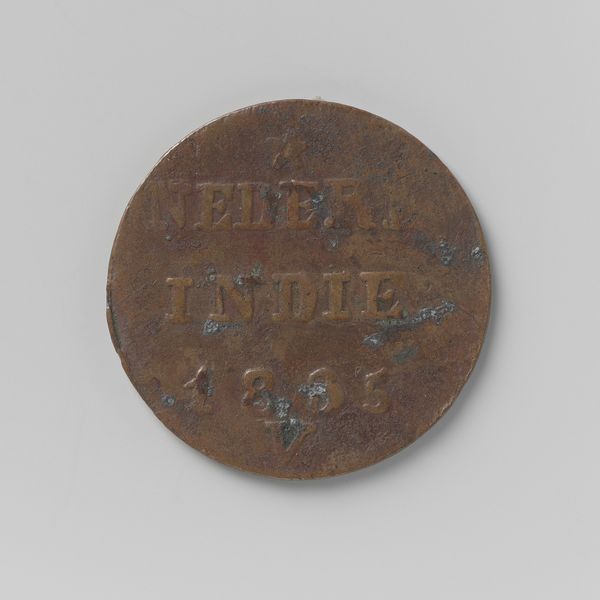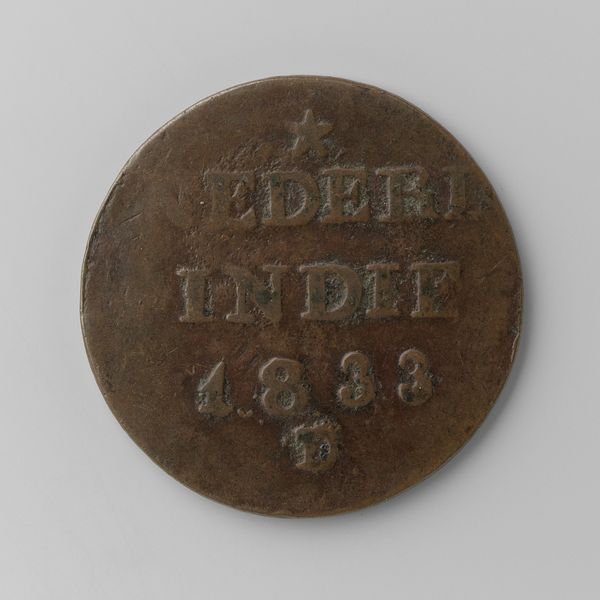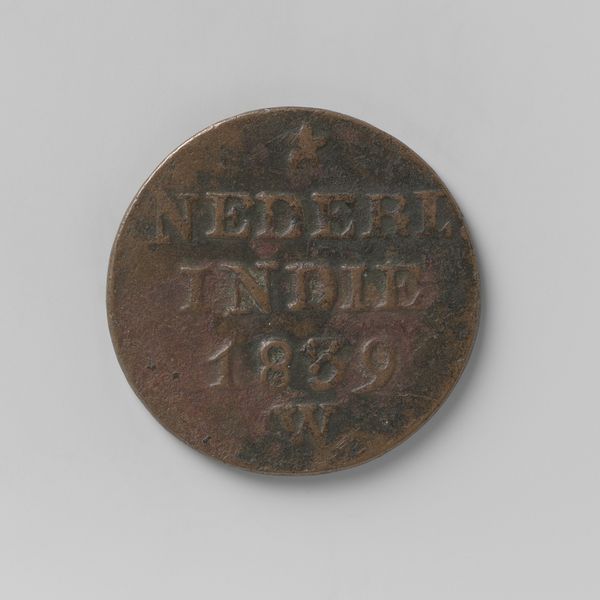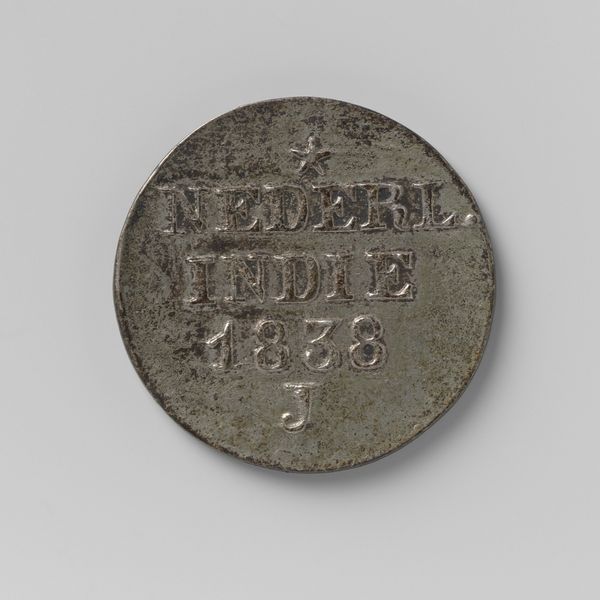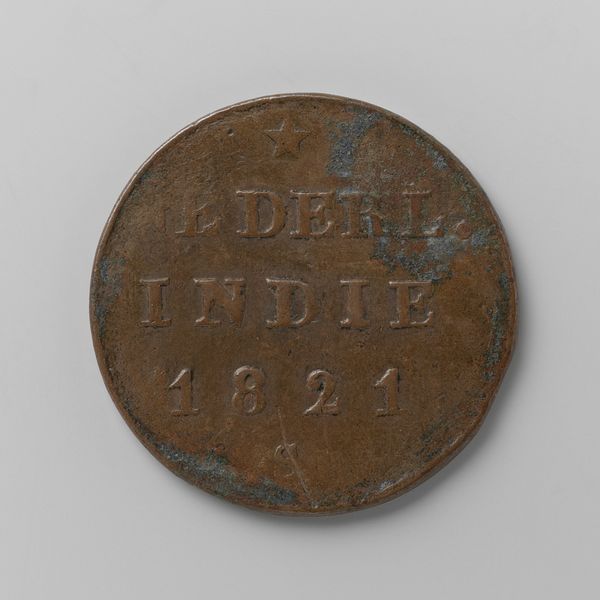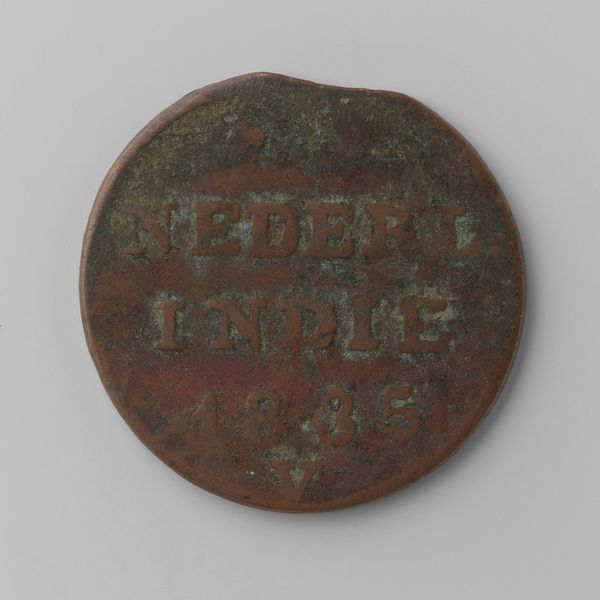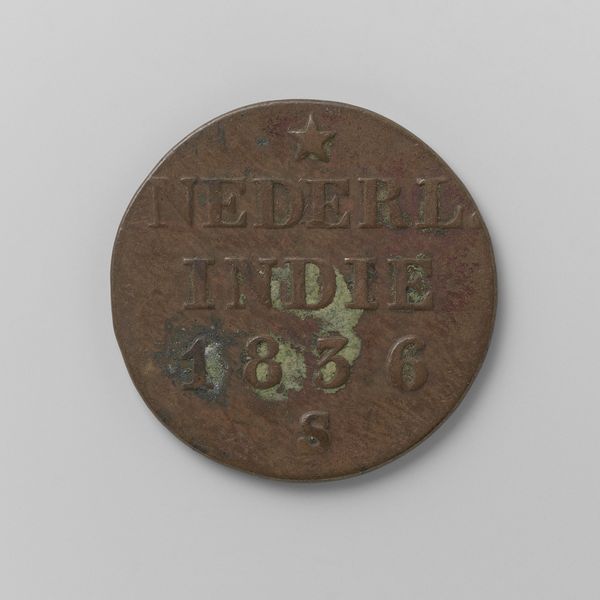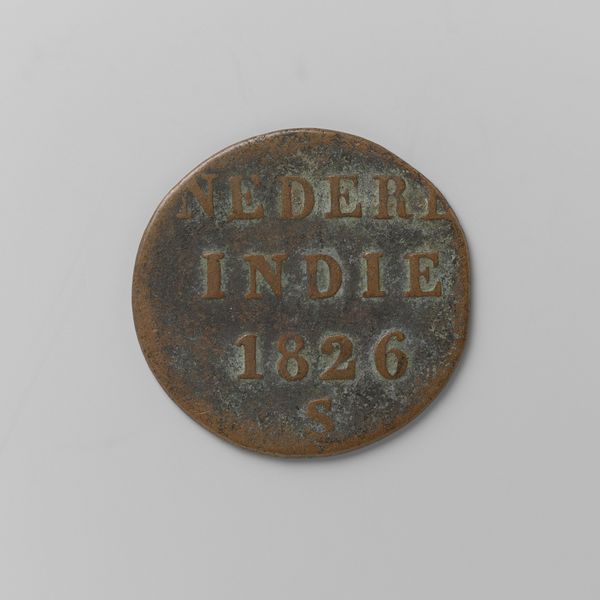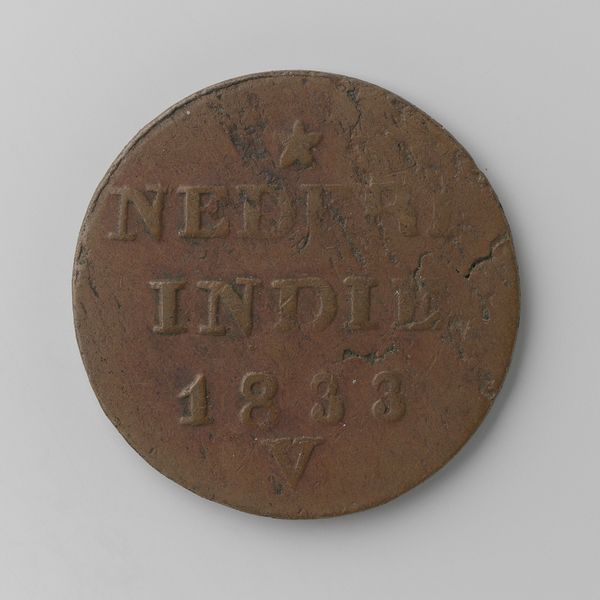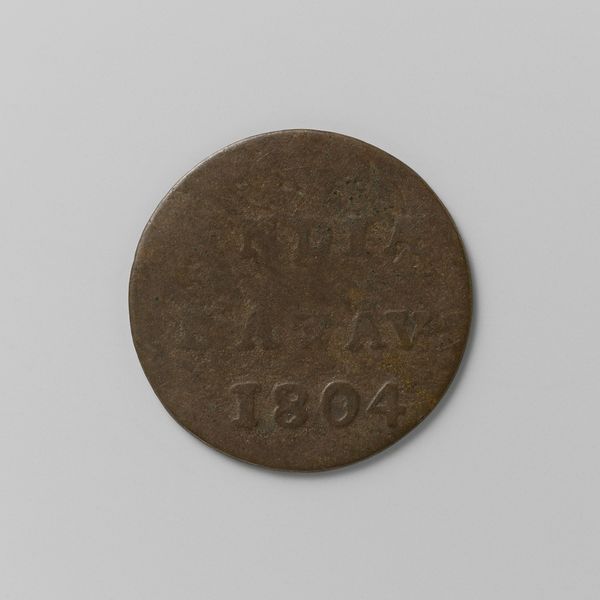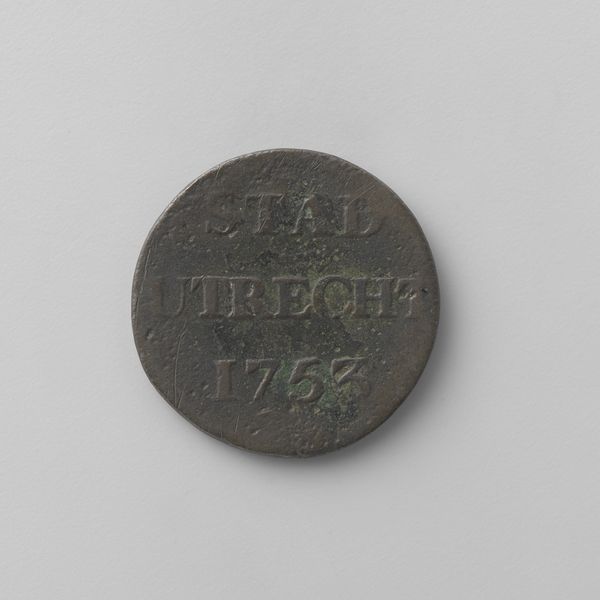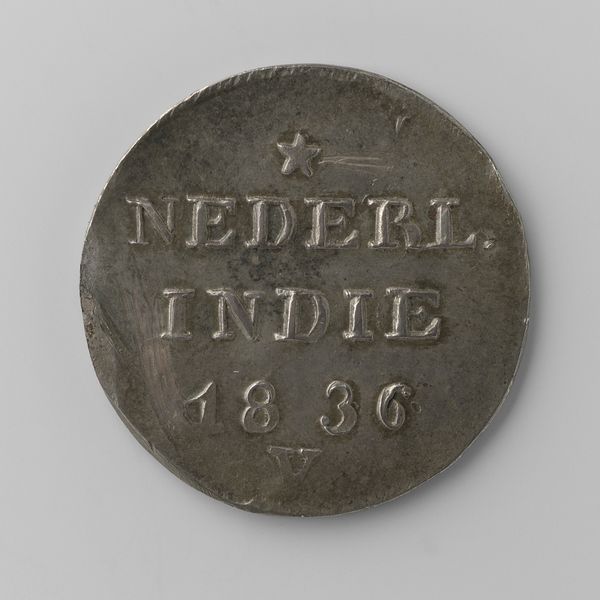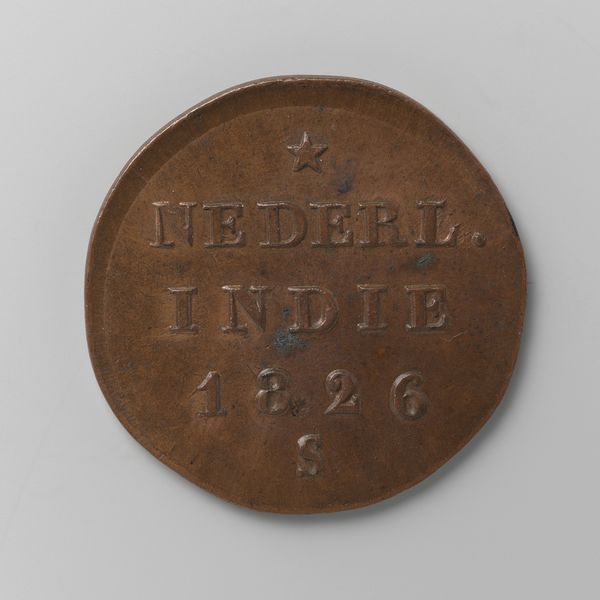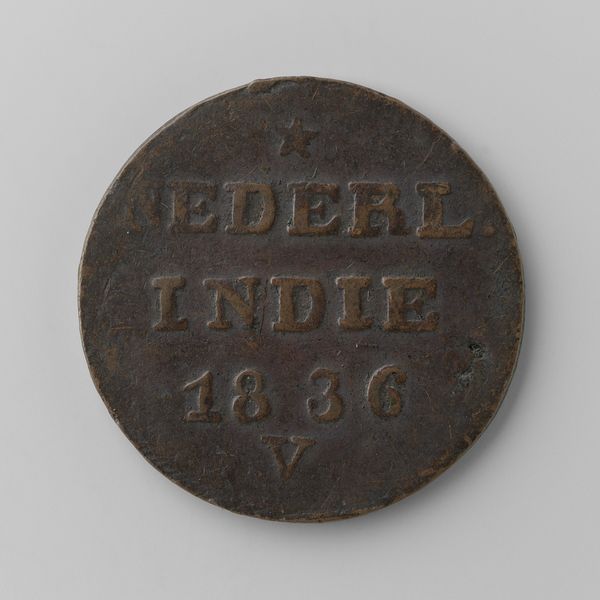
print, metal, photography
#
still-life-photography
# print
#
metal
#
photography
#
coloured pencil
#
orientalism
#
coin
Dimensions: diameter 2.1 cm, weight 3.47 gr
Copyright: Rijks Museum: Open Domain
Curator: Looking at this photograph of the 'Cent van Nederlands-Indië, 1833,' taken at the Rijksmuseum, I am immediately struck by its simple, circular form. It's incredible how much this tiny metal disc can tell us. Editor: It's remarkable, really. Its somber and aged patina speaks of a time of exploitation, almost like a memorial. I’d wager this coin had a huge significance during its circulation. Curator: Exactly. As the currency of the Dutch East Indies in 1833, this cent highlights the socio-political dynamics of colonialism and trade. Consider its relationship to King Willem I of the Netherlands; his portrait appears on many other currencies from this period, thus serving as a potent symbol of Dutch authority in the colony. Editor: And if you look at the texture of the coin itself, the worn surfaces tell stories. Look at how light plays across those small abrasions, making visible that history in a tactile way. It provides the photograph depth and almost, but not quite, invites us to reach out and touch it, like we are holding time in our hand. Curator: Yes! The wear shows that this was actively being used. It helps to bridge the gap between history and the viewer; it reminds us of what the value of a cent had in society at that time. And how the Dutch administration system worked with locals through monetary circulation. Editor: Thinking more on composition, the words “Nederl. Indie” dominates. As does that date of 1833, near the lower edge. It all is framed so cleanly. Also, this piece reflects our engagement with objects—the impulse to collect, archive, and memorialize, or even commodify historical events. Curator: Absolutely. We must be cautious of romanticizing coins, too, which we do by admiring objects for their patina, material makeup, and physical characteristics alone, even while ignoring the darker historical context. These coins represent and facilitated resource extraction and exploitation during Dutch rule. It highlights wealth disparity and power. Editor: So true. But perhaps, then, viewing these coins in collections helps us look at these issues more thoughtfully. Its very existence allows the viewer to reflect upon what may have happened with it. Curator: It's a powerful visual, inviting dialogue on forgotten economic processes and cultural relationships. Editor: Yes, what first appeared somber, through discourse, reveals complexities.
Comments
No comments
Be the first to comment and join the conversation on the ultimate creative platform.
